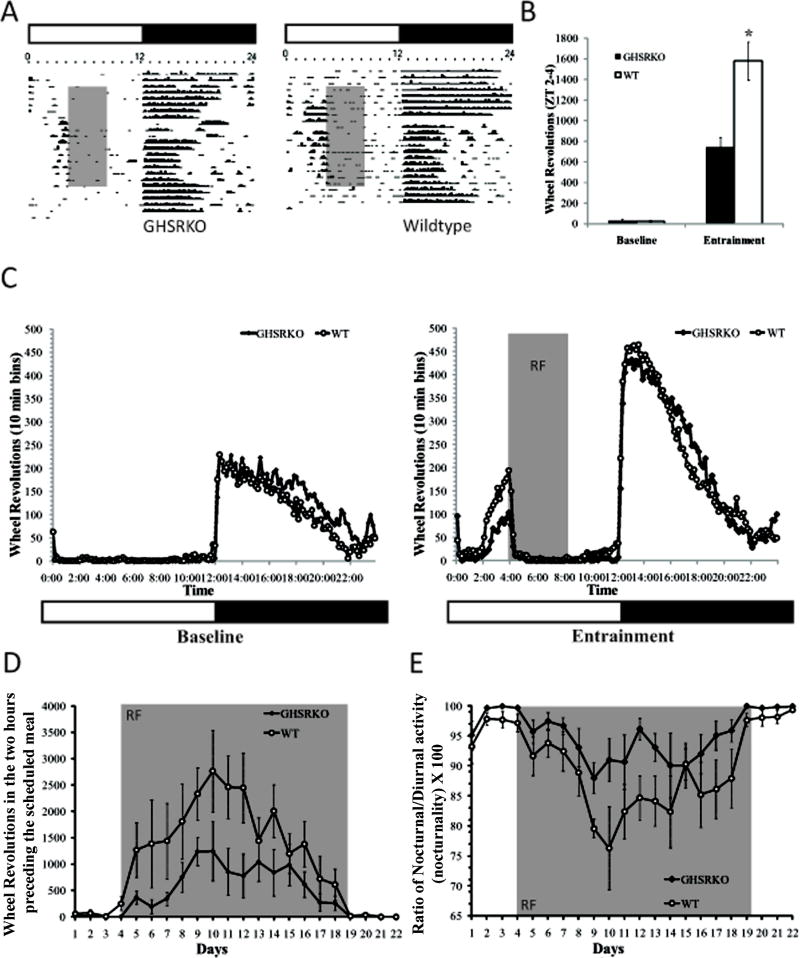Figure 2.
Body weight, food intake and spontaneous locomotor activity in GHSR KO and WT mice before, during, and after a two week restricted feeding schedule, and after 36 hours of food deprivation. As seen in panels A and B, both GHSR WT and KO mice showed similar patterns of body weight and food intake throughout the study. In spite of this, GHSR KO mice moved less in anticipation to a scheduled meal (Panels C, D, E, and F). Interestingly, anticipatory activity persisted in WT mice but not in GHSR KO mice following the restricted feeding schedule under ad lib conditions. While anticipatory activity was seen in both WT and GHSR KO mice following a 36 hour food deprivation period, this tended to be lower in GHSR KO mice. * = significant differences between conditions (p. <0.05). ** = significant genotype differences (p.<0.05). Shaded area represents food restriction, RF with presentation at ZT 4, and F with total food deprivation.

